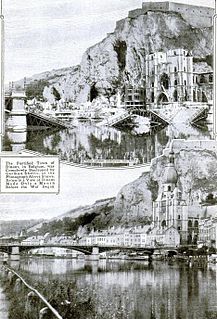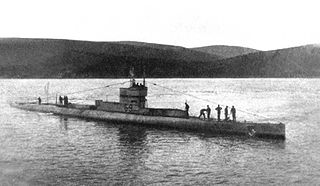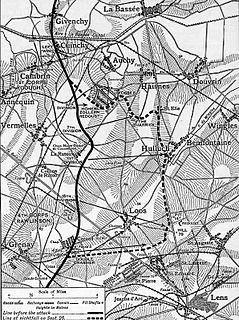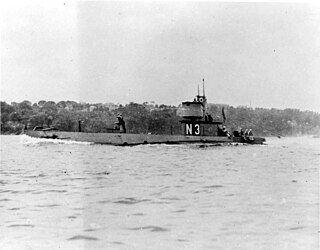 W
WThe Battle of Bolimów was an inconclusive battle of World War I fought on January 31, 1915 between Germany and Russia and considered a preliminary to the Second Battle of the Masurian Lakes.
 W
WHMS C16 was one of 38 C-class submarines built for the Royal Navy in the first decade of the 20th century. The boat survived the First World War and was sold for scrap in 1922.
 W
WThe Battle of Dinant was an engagement fought by French and German forces in and around the Belgian town of Dinant in the First World War, during the German invasion of Belgium. The French Fifth Army and the British Expeditionary Force (BEF) advanced into Belgium and fought the Battle of Charleroi (21–23 August) and Battle of Mons (23 August), from the Meuse crossings in the east, to Mons in the west. On 15 August 1914, German troops captured the Citadel of Dinant which overlooked the town; the citadel was recaptured by a French counter-attack during the afternoon. French troops spent the next few days fortifying the Meuse crossings and exchanging fire with German troops on the east bank.
 W
WHMS G9 was a British G class submarine, one of eight Royal Navy submarines known to have been lost to friendly fire in World War I.
 W
WHMS J6 was a First World War J-class submarine built for the Royal Navy by HM Dockyard at Devonport in Plymouth. Commissioned in 1916 she was sunk in a friendly fire incident by the Q-ship Cymric in October 1918.
 W
WThe Battle of Loos took place from 25 September – 8 October 1915 in France on the Western Front, during the First World War. It was the biggest British attack of 1915, the first time that the British used poison gas and the first mass engagement of New Army units. The French and British tried to break through the German defences in Artois and Champagne and restore a war of movement. Despite improved methods, more ammunition and better equipment, the Franco-British attacks were largely contained by the Germans, except for local losses of ground. The British gas attack failed to neutralize the defenders and the artillery bombardment was too short to destroy the barbed wire or machine gun nests. German tactical defensive proficiency was still dramatically superior to the British offensive planning and doctrine, resulting in a British defeat.
 W
WUSS N-3 (SS-55) was a N-class coastal defense submarine of the United States Navy. Her keel was laid down on 31 July 1915 by the Seattle Construction and Drydock Company. She was launched on 21 February 1917 sponsored by Miss Bertha Coontz, daughter of the commandant of Puget Sound Navy Yard, Captain Robert Coontz, and commissioned on 26 September 1917 with Lieutenant William R. Munroe in command. N-3 was the last submarine constructed in Seattle.
 W
WSM U-7 was a Type U 5 U-boat, one of the 329 that served in the Imperial German Navy in World War I. U-7 was engaged in the naval warfare and took part in the First Battle of the Atlantic.